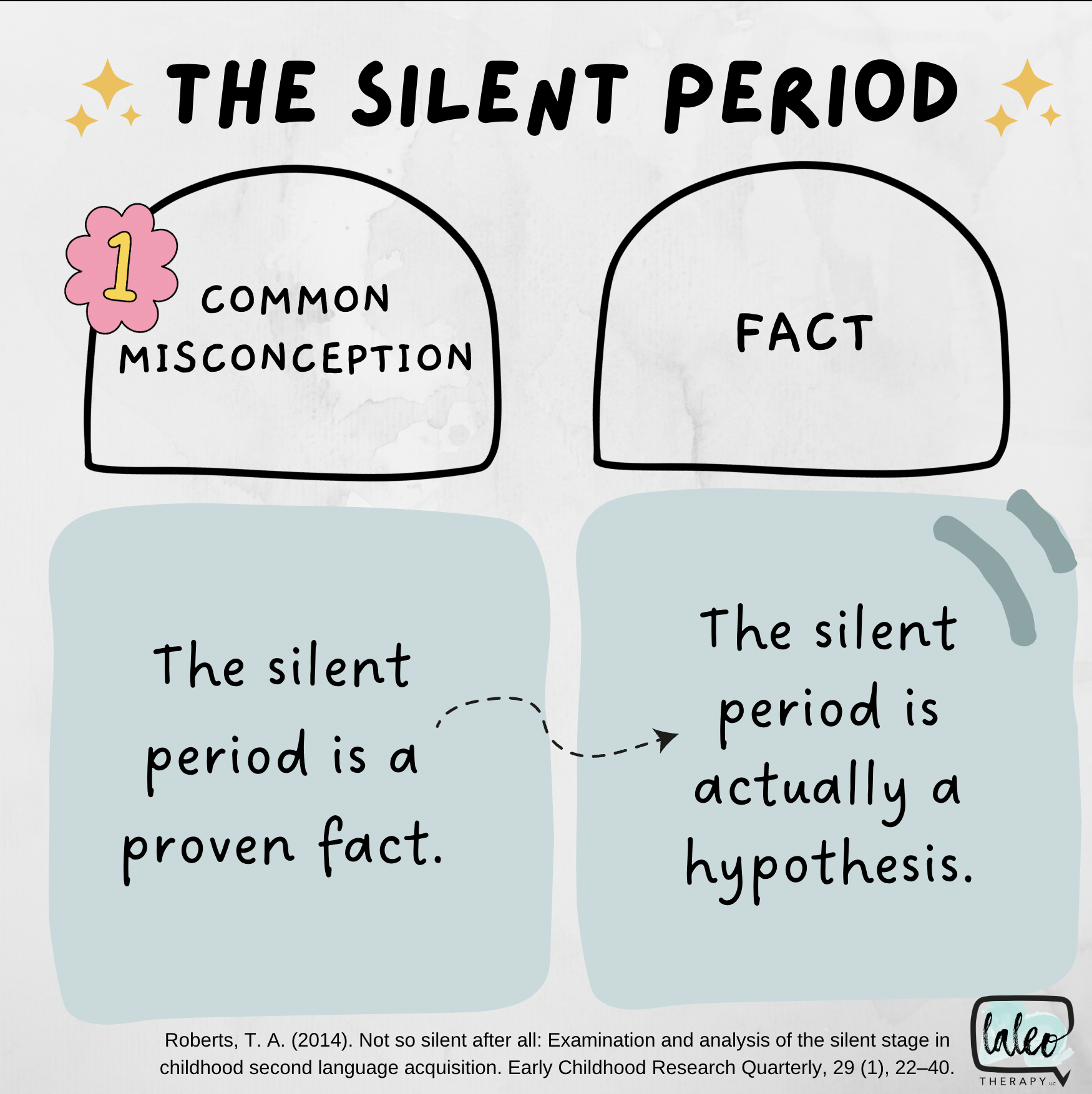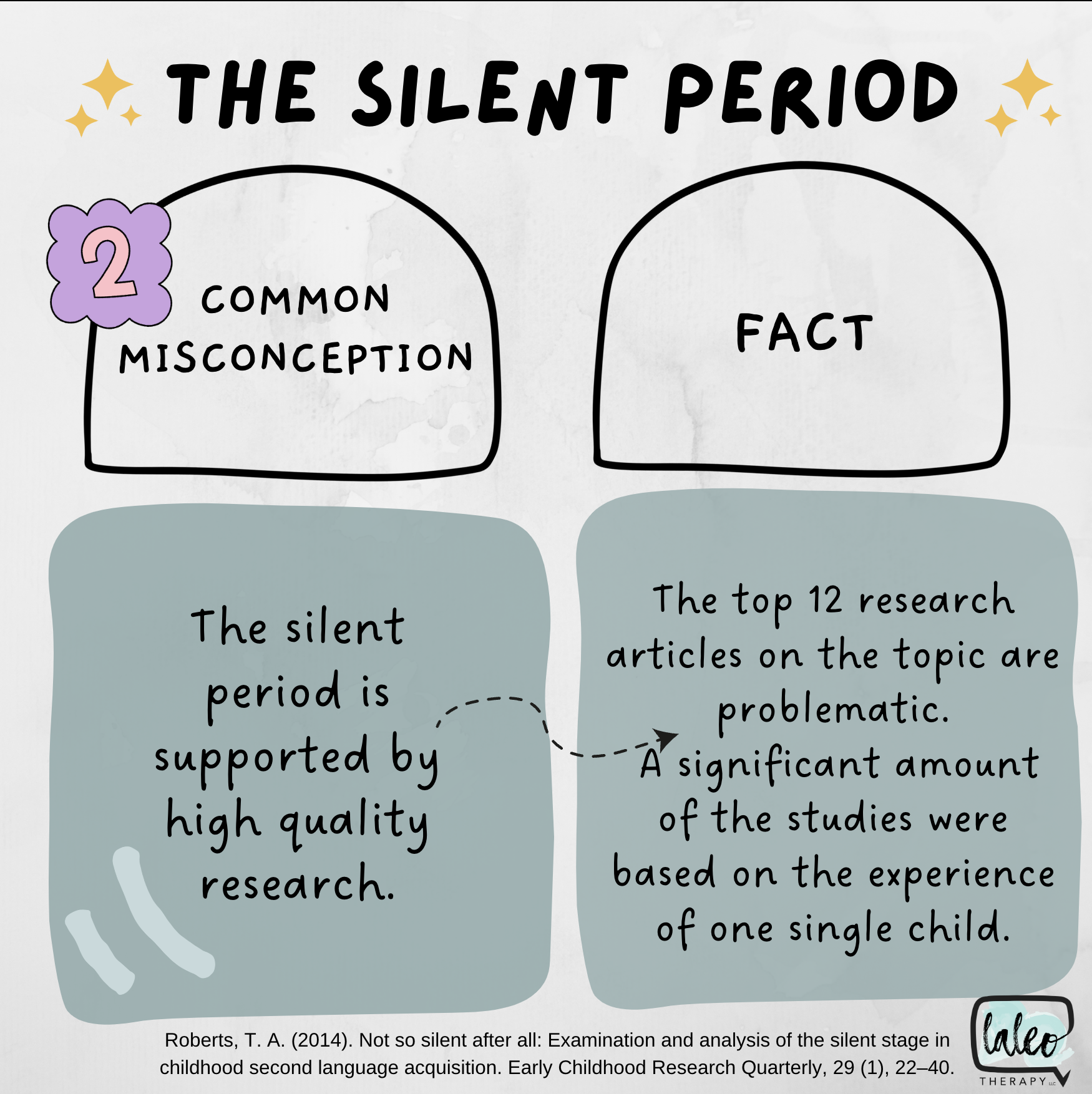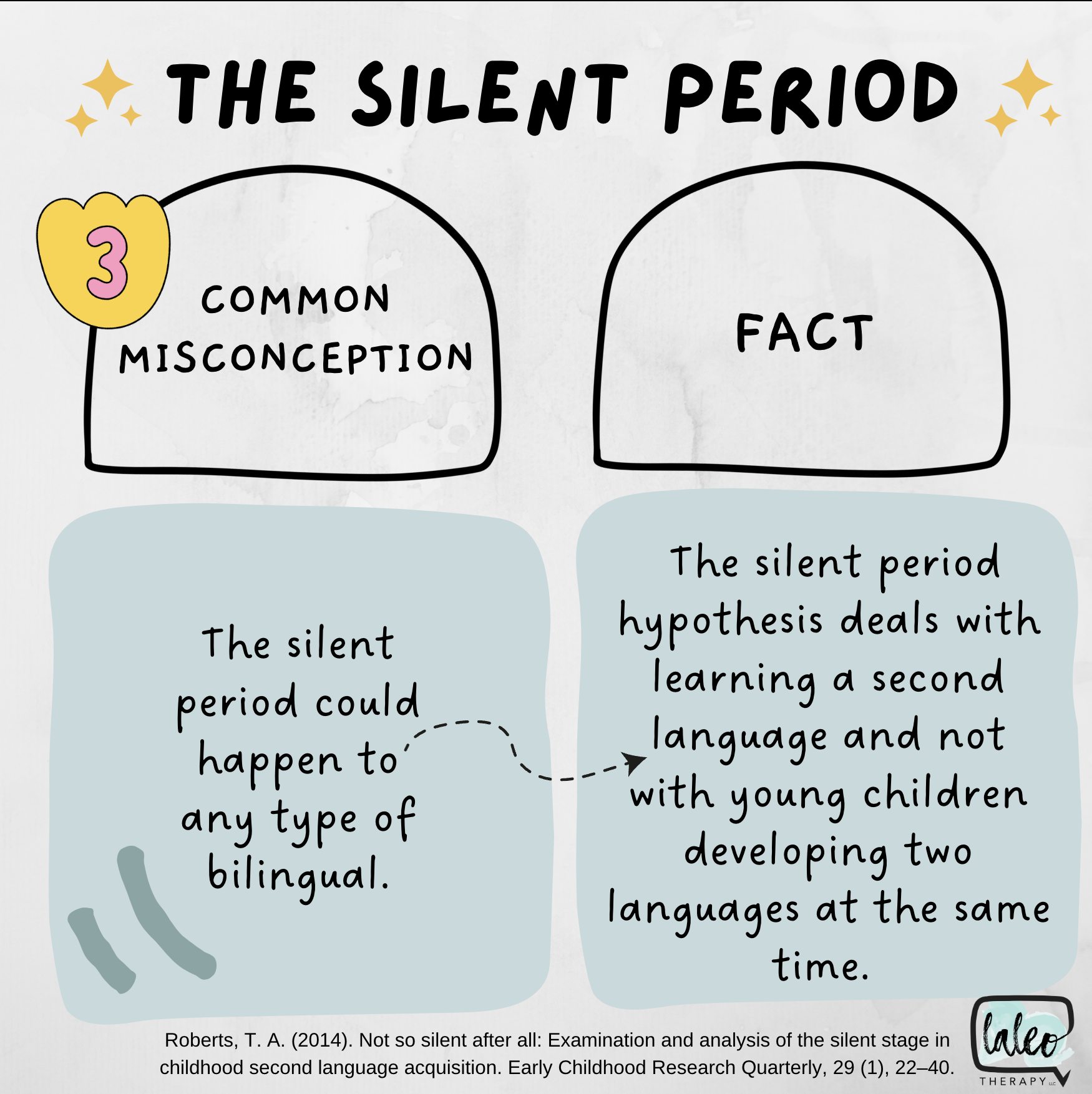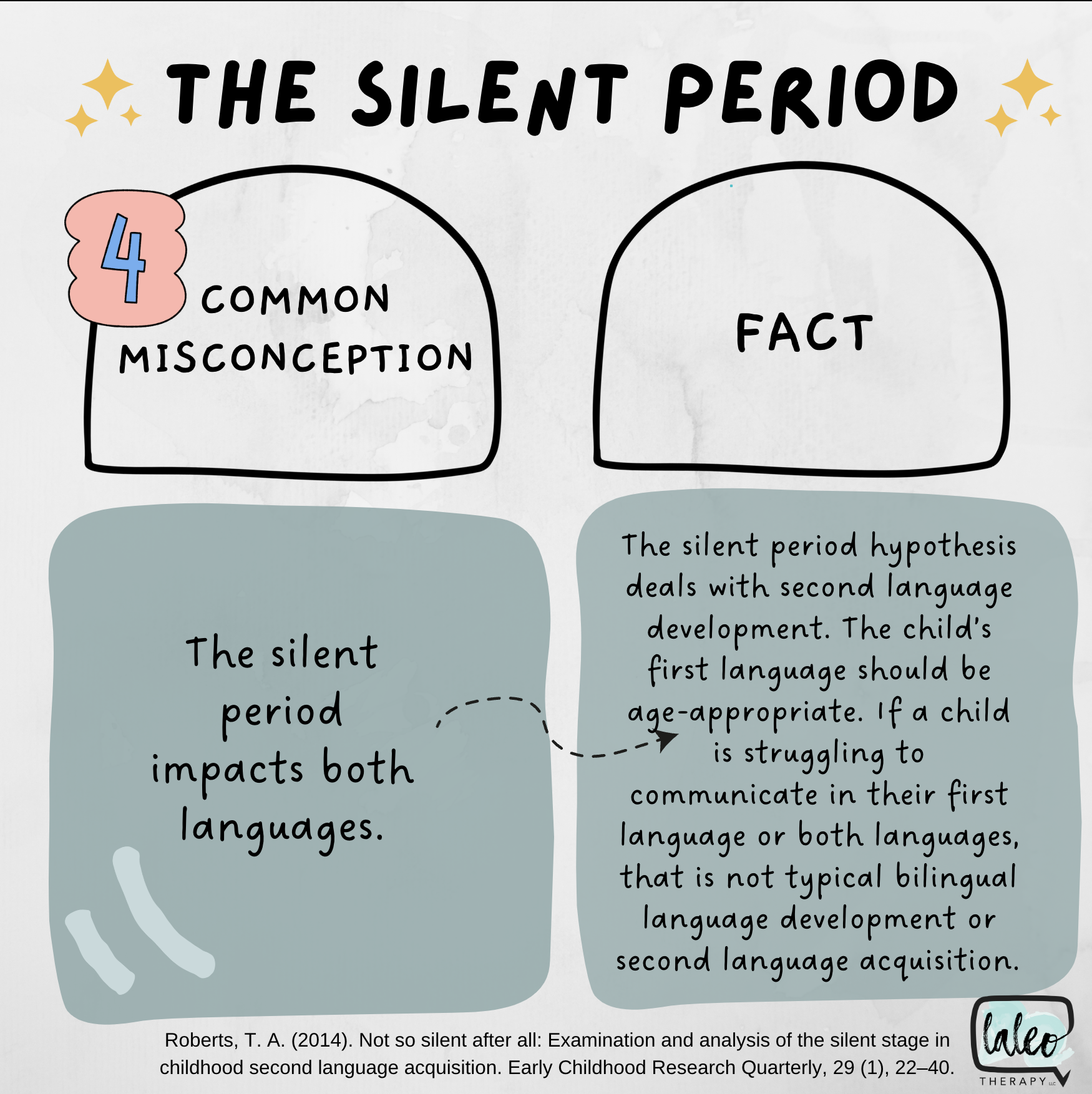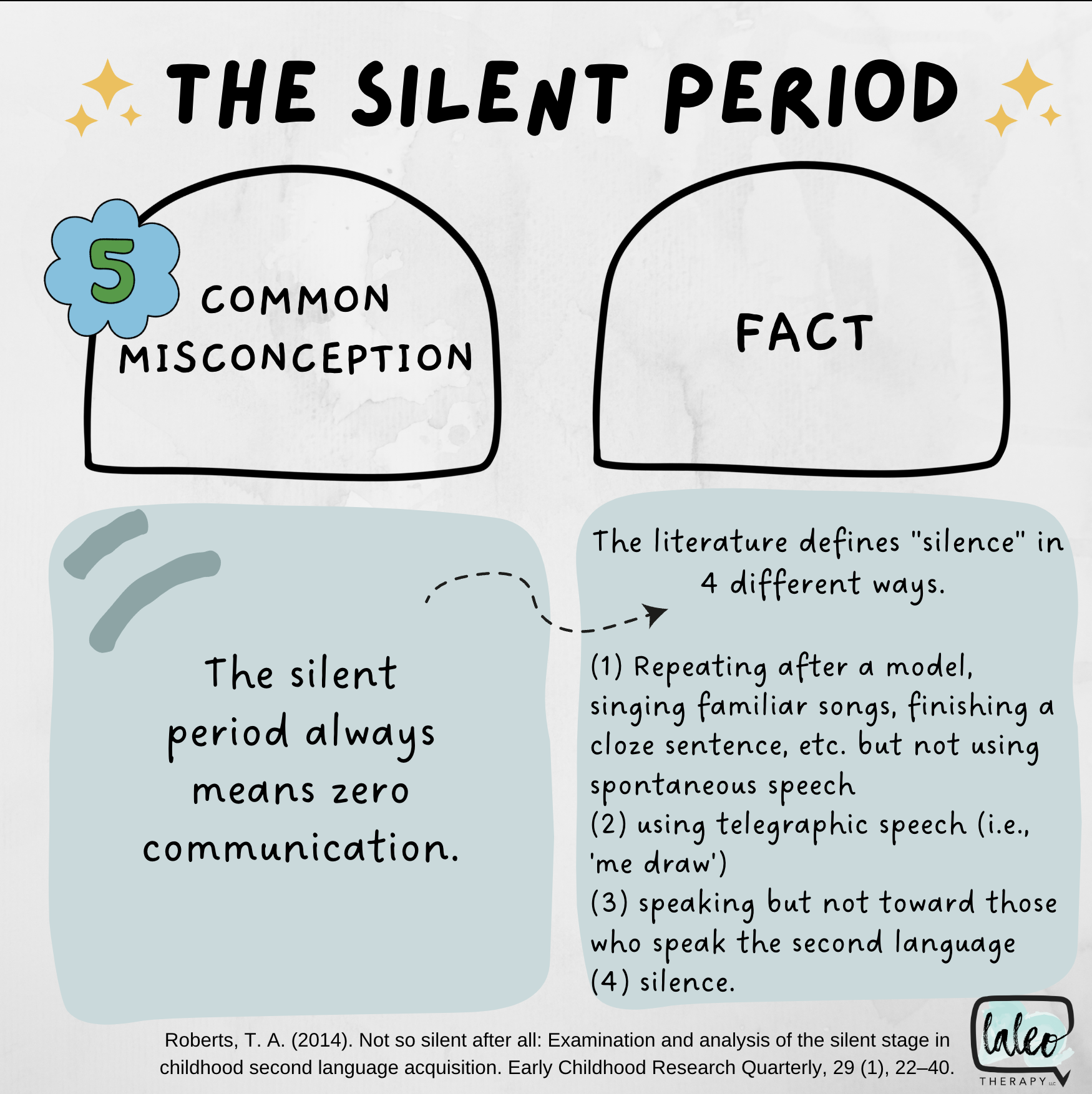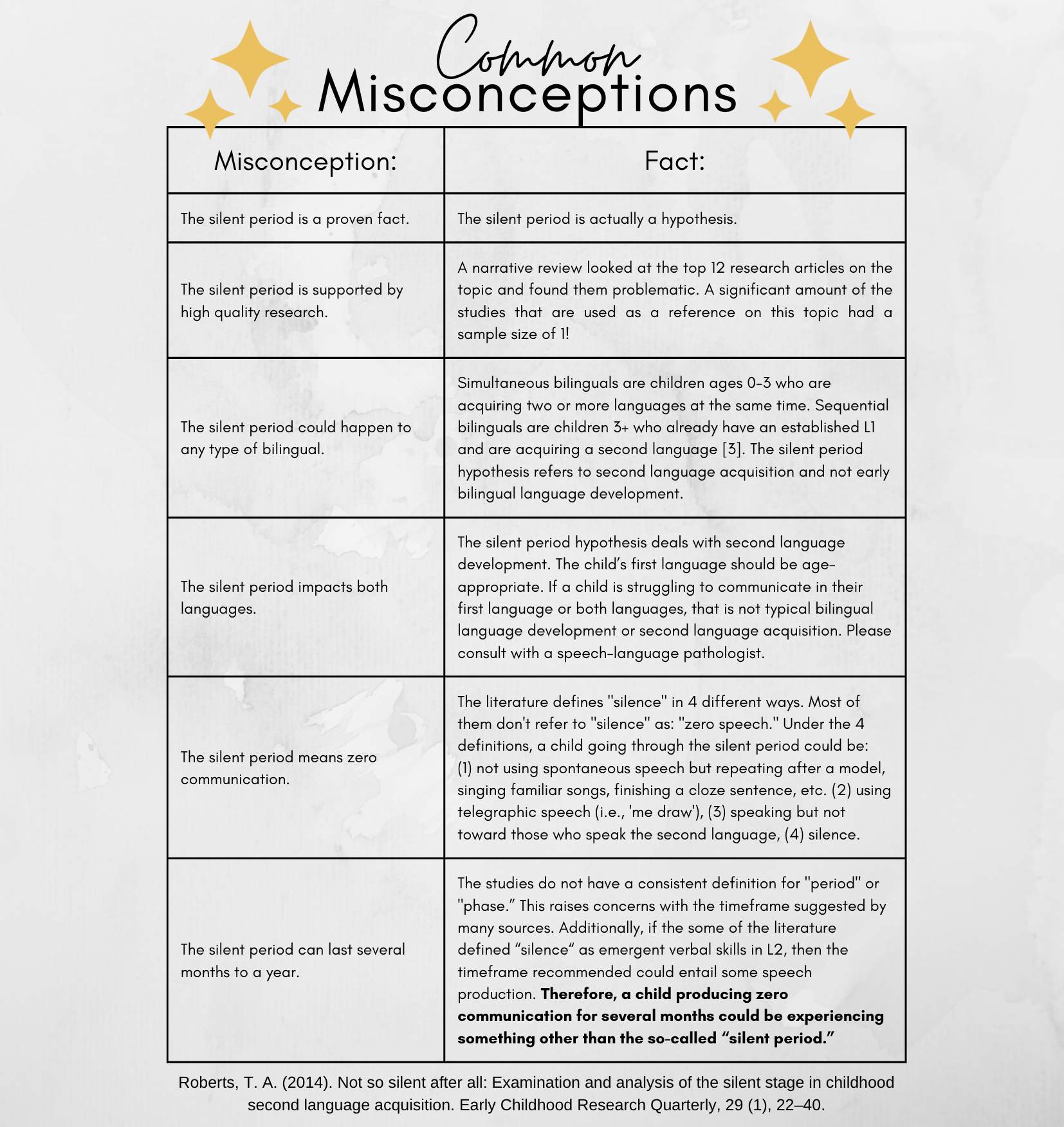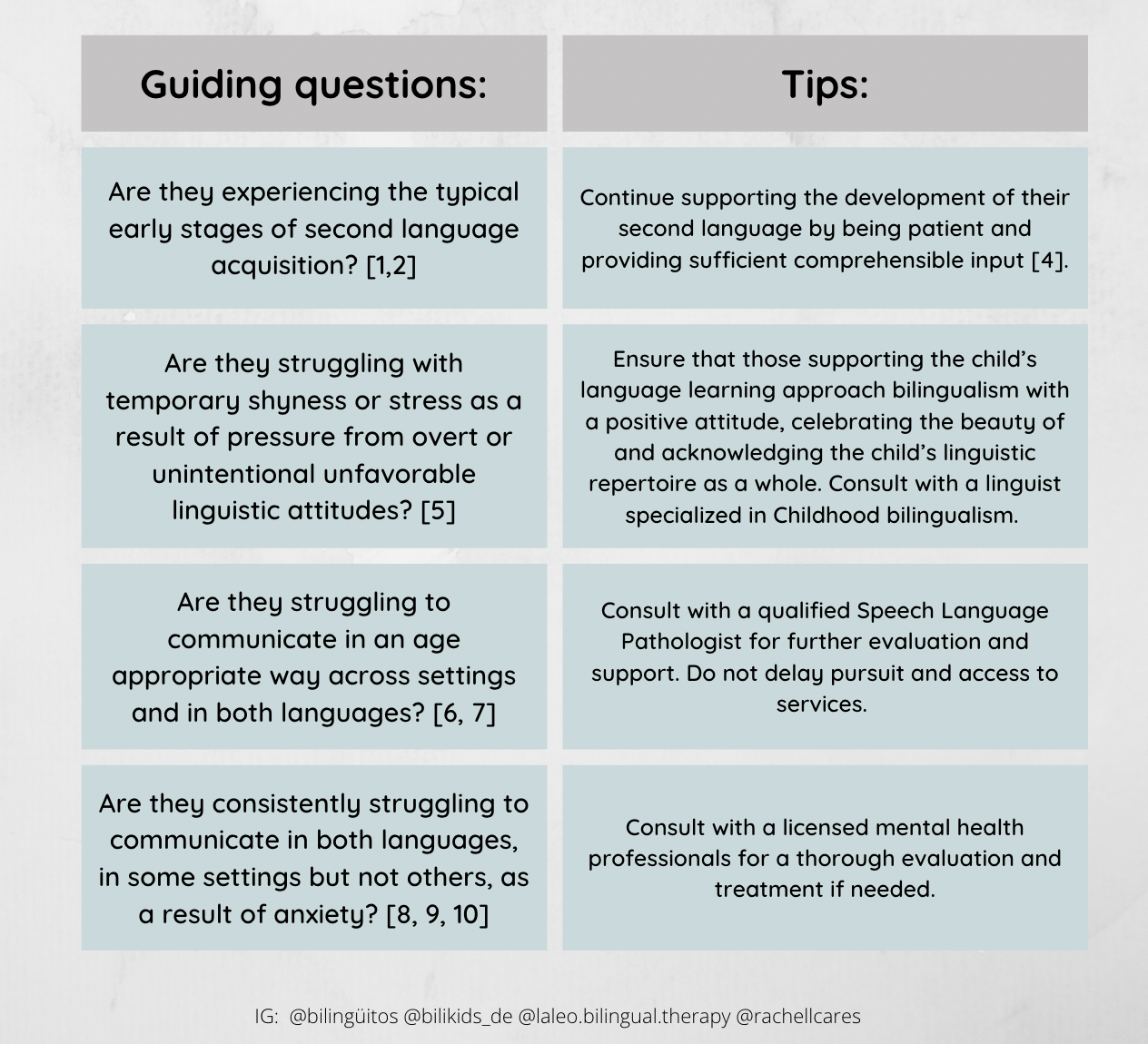The Silent Period & its truth!
What’s up with the silent period???
This topic comes up frequently in the world of bilingualism and every time it does, there are varying thoughts and opinions.
In 2022 I decided to do the deepest dive I could on the topic. I wanted to go to the original literature and understand the truth about the silent period.
Luckly I found someone who had already done that work! Theresa A. Roberts in 2014 took the “best quality”, top 12, research studies about the silent period. Then she wrote a narrative review (aka. a massive document/paper) where she explains each of the study, its finding, and limitations.
I read the narrative review so you don’t have to!
These are the 6 common misconceptions/misunderstandings and truths about the silent period:
Phew! Basically what I think has happened over time is similar to the game of “telephone” but with this topic. Parents and professionals have “heard” this or that about the silent period and have passed it along without verifying the credibility. I hope that helps clear up some common misunderstandings about the topic and helps you feel equipped moving forward with any concerns.
When I dove into the topic, I didn’t want to just give you the facts. I wanted to take it one step further and help parents and professionals sort through the application of this topic. I recruited the expertise of a multidisciplinary team consisting of linguists specializing in childhood bilingualism (@bilinguitos, @bilikids_de), a bilingual speech-language pathologist (@laleo.bilingual.therapy), and a bilingual school psychologist (@rachellcares).
In this PDF booklet, the 4 of use our individual expertise to discuss what could potentially be impacting a child’s communication if the “silent period” isn’t really a thing.
The comprehensive 10 page booklet consists of:
pg. 1 - Cover & Credentials
pg. 2 - Definition of Silent Period
pg. 3 - What is Normal Second Language Acquisition?
pg. 4 - How can Language Attitudes impact a child’s refusal to speak a language?
pg. 5 - Could the child be a Later Talker?
pg. 6 - When to consider Selective Mutism
pg. 7 - Which one is it? Guiding Questions and Tips to help determine the root of the communication difficulties - Chart
pg. 8 - Printable “Common Misconceptions” - Chart
pg. 9 - Sources/Literature
pg. 10 - Terms of Use

